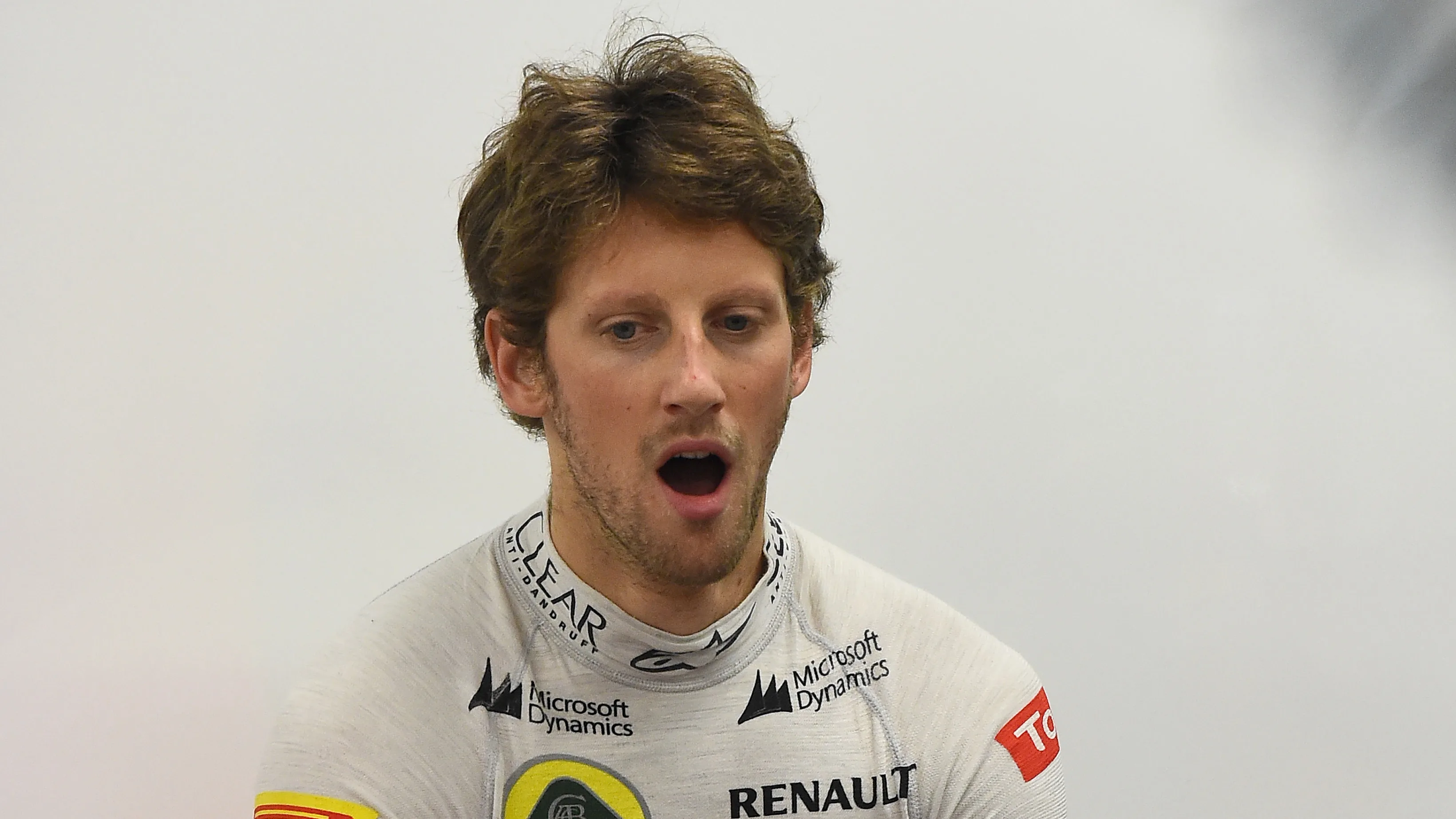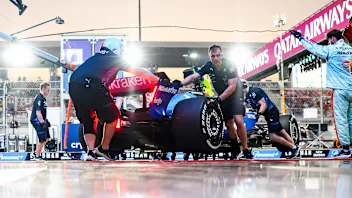You may think that racing at night is the biggest headache for the drivers at Singapore’s Marina Bay Street Circuit, but believe it or not the track is so well lit that visibility has never been an issue. That’s a blessing because, as we detail below, there are a plethora of other tricky factors to deal with at this most challenging of races…
1. The heat
Singapore may be a night race, but don’t be fooled - even when the sun dips below the horizon the ambient temperature and humidity remain at energy-sapping levels. Typically the former will hover around the 30 degree Celsius mark, whilst the latter can spiral to over 80 percent. As a result the drivers have to deal with hugely uncomfortable conditions in the cockpit, where temperatures usually linger around 60 degrees C.
“It's hard to describe what it's like to drive a two-hour race in those conditions, but try thinking of what it would be like sitting in a sauna wearing a full fireproof race suit and helmet,” Lewis Hamilton told British F1 broadcasters, the BBC. “If 10 is the hottest temperature of that sauna, then the Singapore race is a seven. And then you do a bit of a workout - some press-ups, running on the spot and so on.”
“It’s the only race of the season where you crack open your visor to let in some cool air and instantly wish you hadn’t because it’s hotter outside,” says Red Bull’s Daniel Ricciardo. “By the warm-up lap your chilled drinks bottle is the temperature of a freshly-poured cup of tea…”
Hot or not, with the negative effects of dehydration well documented, the drivers have no choice but to keep drinking water throughout the race, especially as they’ll typically ‘sweat off’ several kilos of bodyweight.
2. The bumps
Given that they have to withstand punishment from all manner of vehicles on a day-to-day basis, it’s unsurprising that street tracks are considerably bumpier than their purpose-built cousins. There's been some resurfacing work at Marina Bay over the years, but despite that it remains far from smooth.
“You are being thrown around in the car, bounced all over the place,” says Hamilton, a two-time winner in Singapore. “There is compression in your spine. Your legs are moving. You're vibrating all the time, hoping not to lock up the brakes. It's crazy.”
The drivers rely on their incredible core strength to maintain stability in the car, which perhaps explains why Sauber’s Marcus Ericsson believes that Singapore “requires double the amount of energy over a single lap compared to Monte Carlo”.
3. The number of corners
Another factor that ensures that Singapore is, in Ricciardo’s words, “the most physical challenge of the year” is the sheer number of corners on the circuit.
The 5.065 kilometre Marina Bay track has 23 of them - the most of any circuit on the calendar - spread across a relatively short distance, and with so many turns coming so thick and fast, the drivers have very little time to rest.
“There is no respite because you are constantly turning left and right, left and right,” says Hamilton. “It's like sprinting. I'm sure our heart rate here is higher than in other places.”
Lots of corners, of course, mean lots of braking, and even though there aren’t any particularly high-speed stops at Marina Bay, according to brake manufacturers Brembo the drivers are still using their left foot for almost a quarter of each lap, applying an eye-watering 81,435kg of braking force over the 61-lap race…
4. The duration of the race
Another function of having so many corners - and so many slow ones at that - is a long average lap time. In fact, only Spa-Francorchamps, which is 1.939 km longer than Marina Bay, takes a similar duration to lap in dry conditions.
However, unlike at fellow street circuit Monaco where the race distance is adjusted to compensate for the slow speeds, the race distance in Singapore remains the standard amount, which is the minimum number of laps required to exceed 305 kilometres (in this case, 61).
The end result? The longest Grand Prix of the season, with race times generally just below the two-hour maximum threshold.
“You’ve got to stay 100 percent focused for a full two hours, which is tougher than it sounds with the crazy humidity,” says Hamilton. “Any small slip and you’re in the barrier, so maintaining that total concentration is crucial.”
Little wonder there has been a safety-car intervention in every Singapore race to date…
5. The unusual session times

One of the stranger aspects of the Singapore race weekend is that all of the teams and drivers stay on European time to compensate for the fact that all of the sessions take place at night, long after they’d happen on a ‘normal’ Grand Prix weekend.
“It sounds unusual but because the race starts at 8.00pm we have to try and stay on European time as much as possible, to make sure we’re alert later into the night,” says Ferrari’s Sebastian Vettel, who has a record three wins in Singapore. “I get up at about lunchtime and have breakfast at about 2.00pm because that’s 8.00am in Switzerland [where Vettel lives].
“It is a bit weird to have lunch in the evening and go to bed in the early hours of the morning, but we’ve done it for a few years now so it feels more normal than it did the first time.”
“Once you get used to waking up in the afternoon and then going to bed early morning, then it gets to be just routine,” agrees Lotus’s Romain Grosjean. “It’s no secret that I love my sleep so one of the most important aspects of preparation for me is ensuring that my room stays dark in the morning. I [always] hope the hotel has good blackout curtains! If it doesn’t then it’s not unknown for me to tape black rubbish bags to the windows to keep the light out and guarantee my sleep!”
Next Up
Related Articles
 Williams become latest team to announce 2026 livery reveal date
Williams become latest team to announce 2026 livery reveal date End Of Year Reports 2025McLaren’s best and worst moments from 2025
End Of Year Reports 2025McLaren’s best and worst moments from 2025.webp) Unlocked‘We have a lot of hopes’ – Vasseur on Ferrari's 2026
Unlocked‘We have a lot of hopes’ – Vasseur on Ferrari's 2026 Who are the 2026 F1 drivers?
Who are the 2026 F1 drivers? Antonelli picks standout moments from rookie season
Antonelli picks standout moments from rookie season End Of Year Reports 2025Red Bull’s best and worst moments from 2025
End Of Year Reports 2025Red Bull’s best and worst moments from 2025